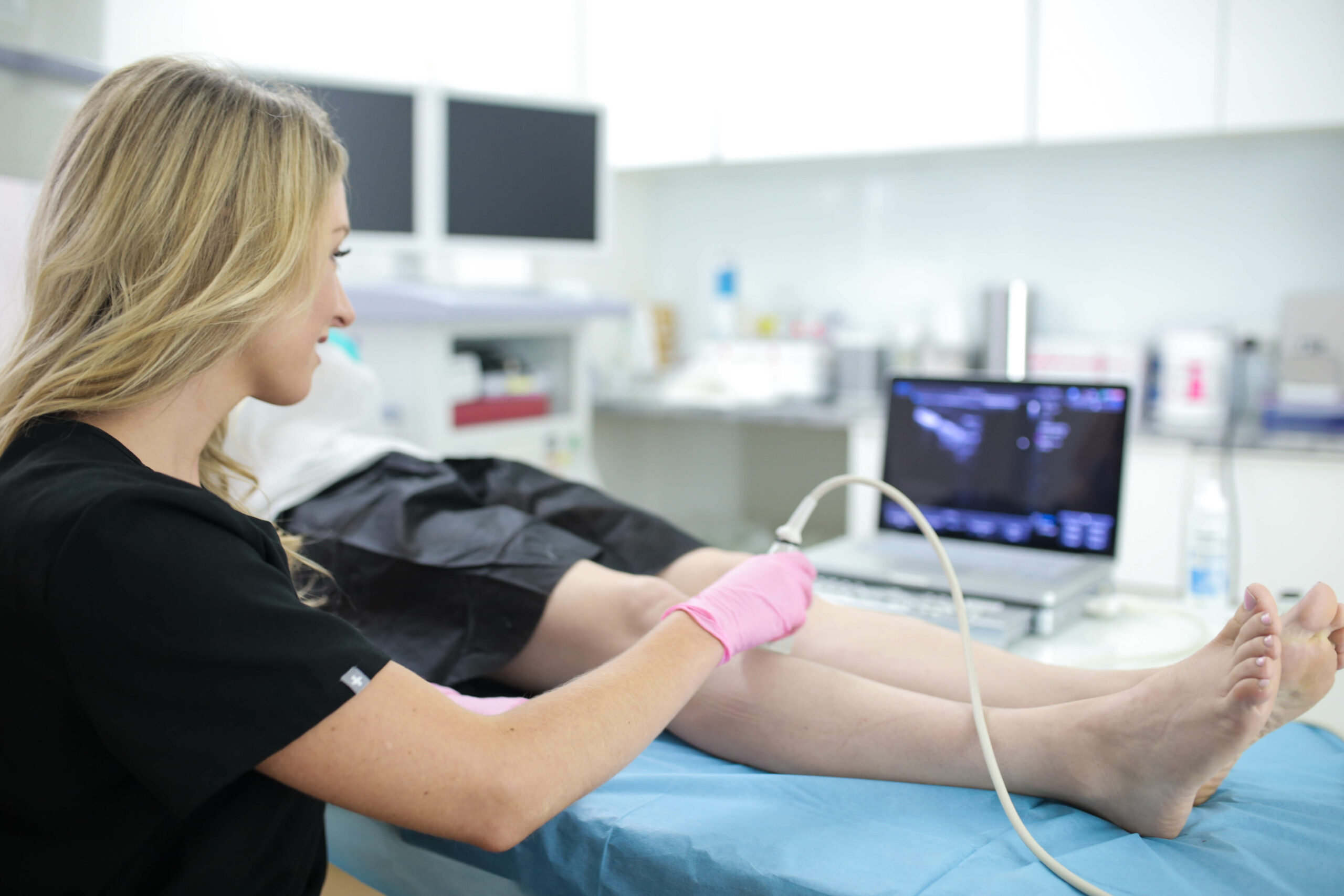How to get rid of varicose veins?
If you’re wondering how to get rid of varicose veins, you probably have varicose veins on your legs. Varicose veins are dense masses of bulging blood vessels that protrude out of your skin’s surface in a twisted, tangled, and knotted form. Some patients say varicose veins look like a dense mass of tangled ropes, whereas others compare them to tree branches. Some people believe varicose veins are broken capillaries on legs, but that’s not accurate — varicose veins are damaged veins with excess blood.

If you want to remove varicose veins, you need to understand the root cause of the problem. A dangerous circulatory disorder known as chronic venous insufficiency is the primary root cause of varicose veins, spider veins, and most other vein problems. Venous insufficiency is a medical condition wherein the collapse of vein valves leads to the accumulation of blood in leg veins, eventually leading to dilated spider veins and varicose veins. If you want to remove varicose veins, you must address the root cause — otherwise, the varicose veins will simply return.
If you have varicose veins, please schedule an appointment at our state-of-the-art vein treatment clinics. Our board-certified vein doctors carefully examine your leg veins, review your medical history, and curate personalized vein treatment plans for you. You can also make some simple lifestyle changes to alleviate the worst symptoms of vein disease, but the only way to permanently treat chronic venous insufficiency is through minimally invasive spider vein and varicose vein treatments. Below, we describe how to get rid of varicose veins and spider veins.

Conservative solutions for varicose veins: compression stockings, exercise, and posture
Let’s start with a description of some conservative solutions for varicose veins. You can improve your blood circulation and push some of the accumulated blood towards your heart through some simple lifestyle changes, such as wearing compression stockings and exercising. It’s important to emphasize that these solutions won’t treat vein disease — they will only alleviate the worst symptoms of varicose veins and chronic venous insufficiency.
Compression Stockings
Compression stockings are skin-tight garments that apply pressure on your leg veins. They push some of the blood from your leg veins to your heart and prevent more blood from accumulating in your leg veins. You can wear compression stockings to minimize the risk of vein disease. If you already have varicose veins, compression stockings can improve the symptoms. But compression stockings can’t treat the root cause of varicose veins.
Exercise
You should engage in cardiovascular exercises to improve the symptoms of vein disease. Running, cycling, swimming, and yoga are some of the best exercises for varicose veins because they engage your calf muscles, improve blood circulation, and push the accumulated blood towards the heart. Your legs might feel lighter after exercising, but the relief will be temporary — only minimally invasive treatments can provide long-term relief.
Elevate Your Legs
If you have a desk job, you should elevate your legs above your heart’s level while sitting down. When you elevate your legs, the accumulated blood in your leg veins will flow towards the heart because of gravity, thus alleviating the worst symptoms of vein disease. You can also take short breaks to walk around your office, which should get the blood flowing. The primary goal is to promote blood circulation and prevent blood from accumulating in leg veins.
Minimally invasive spider vein and varicose vein treatments after a thorough evaluation
When you consult our vein doctors, you can expect a thorough consultation and physical examination. The vein doctor will examine your leg veins, discuss your goals, review your medical history, and administer ultrasound tests to visualize the blood flow in your leg veins. Based on the diagnosis, the vein doctor will curate a personalized vein treatment plan, which will consist of minimally invasive procedures like radiofrequency ablation, laser ablation, and sclerotherapy. The vein doctor will collapse the diseased saphenous vein, treat the underlying vein disease, and then remove the superficial varicose veins and spider veins.
Radiofrequency Ablation
Radiofrequency ablation is the best minimally invasive treatment for vein disease. The vein doctor channels thermal energy into the diseased vein via a catheter under ultrasound guidance. The diseased vein is destroyed, and the accumulated blood reroutes into healthier leg veins.
Laser Ablation
Laser ablation is one of the most reliable vein treatments. The vein doctor channels laser energy into the diseased vein via an endovenous laser under ultrasound guidance. The problematic vein is collapsed, and the accumulated blood easily flows into healthier leg veins, restoring optimal blood circulation.
VenaSeal
VenaSeal involves using a medical-grade adhesive to collapse the diseased vein. The vein doctor inserts a specialized catheter into the diseased vein to deliver a medical adhesive that seals the diseased vein’s walls shut, rerouting the accumulated blood into healthier leg veins.
ClariVein
ClariVein, also known as mechanochemical ablation, is an innovative vein treatment for extremely large and tortuous varicose veins. The vein doctor inserts a specialized catheter with a rotating wire tip into the diseased vein. When activated, the catheter damages the diseased vein’s walls while delivering a sclerosant medicine.
Ambulatory Phlebectomy
Ambulatory phlebectomy, also known as microsurgery, is perfect for superficial varicose veins after the primary vein treatment is done. The vein doctor makes small incisions on the skin’s surface to extract the superficial varicose veins. The incision marks gradually heal and fade away. This procedure offers instant results.








